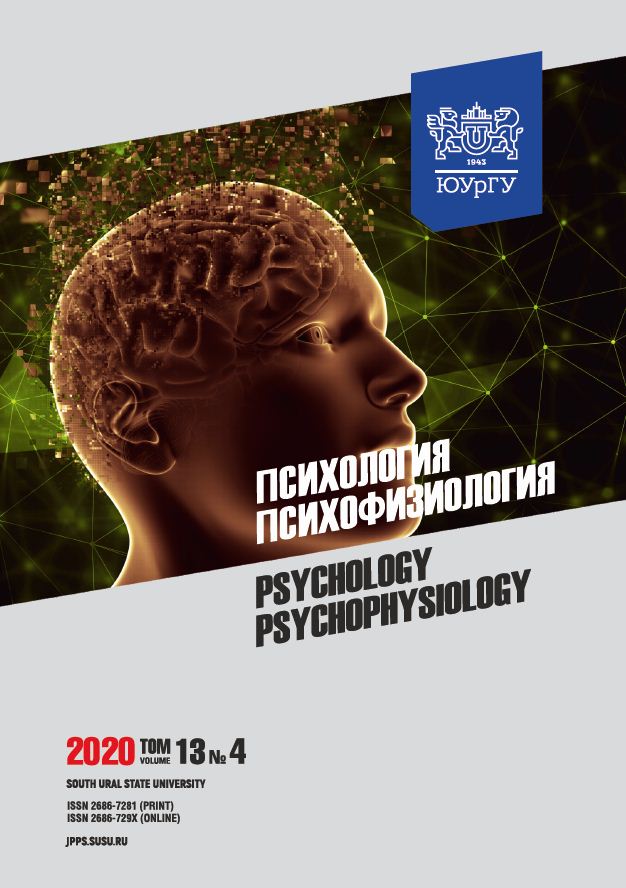AGGRESSION LEVEL AND NEURODYNAMIC CHARACTERISTICS OF ADOLESCENT ATHLETES
Abstract
Background. Sports performance is largely determined by the psychophysiological characteristics of a person, including the level of aggression. Therefore, early diagnosis of changes in the level of aggression and its relationship with neurophysiological characteristics in young athletes remains relevant. Aim. The paper aims to establish relationship between the level of aggression with the neurophysiological status and biological maturation of adolescent athletes. Materials and methods. 90 hockey players ages 12–14 with similar sports skills were examined. When forming groups, the correspondence of biological age to passport age (mediants, retardants, accelerants) was taken into account according to anthropometric data and the signs of puberty. A comparative analysis of aggression and its components (physical, verbal, anger or hostility) was carried out based on the results of the Buss-Perry Aggression questionnaire. To identify the relationship between aggression, the neurophysiological status and biological maturation, a cluster analysis was carried out. Results. The relationship between aggression, biological maturation and the neurophysiological status of young athletes was established. The studied parameters are combined in several clusters with a high (0.751–0.875) and average (0.626–0.750) degree of correlation. It was revealed that there was a significant excess of general aggression, physical aggression and the affective component of aggressive behavior (anger) in adolescent athletes compared to those athletes whose biological age was behind the passport one. Conclusion. The obtained data will allow developing recommendations for the system of medical and psychological support for adolescent athletes.
Downloads
References
Zasyadko K.I., Vonarshenko A.P., Soldatov S.K. et al. [Analysis of qualities professionally important for flight instructor and their enhancement]. Aviakosmicheskaya i ekologicheskaya meditsina [Aerospace and Environmental Medicine], 2020, vol. 54, no. 1, pp. 52–56. (in Russ.). DOI: 10.21687/0233-528X-2020-54-1-52-56.
Molchanov A.S., Chausov E.V., Basnin V.G., Abramov D.V. [Analysis of the process of deciphering images of dashed worlds of the visible range during testing of aerial photo systems for remote sensing of the Earth]. Evraziiskoe nauchnoe obedinenie [Eurasian Scientific Association], 2017, vol. 1, no. 12 (34), pp. 54–57. (in Russ.).
Bocharnikov N.V., Brylev G.B., Gusev S.O. Meteorologicheskoe oborudovanie aerodromov i ego ekspluatatsiya [Meteorological equipment of aerodromes and its operation]. Saint Petersburg, Gidrometeoizdat, 2003. 292 p. (in Russ.).
Vozdushnaya razvedka vizualnym nablyudeniem [Aerial reconnaissance by visual observation]. Moscow, MO SSSR, 1975. 140 p. (in Russ.).
Guzii A.G., Kukushkin Ju.A., Lushkin A.M. [Computer technology for predictive evaluation of the functional reliability of the pilot]. Programmnye sistemy i vychislitelnye metody [Software systems and computational methods], 2018, no. 2, pp. 84–93. (in Russ.). DOI: 10.7256/2454-0714.2018.2.22425
Guseva N.N. [Some results of experimental assessment of the height of visual contact from the glide path of descent in low clouds and fogs]. Trudy Gidrometeorologicheskogo nauchno-issledovatelskogo tsentra Rossiiskoi Federatsii [Transactions of the hydrometeorological research center of the Russian Federation], 1992, no. 321, pp. 61–63. (in Russ.).
Dorofeev V.V., Nahmanson G.S. Naklonnaya dalnost vidimosti [Slant visibility range]. Voronezh, Voronezhskii VVAIU, 2007. 209 p. (in Russ.).
Esev A.A., Lagoiko O.S. [Method of automated image processing in aviation systems for visual monitoring of out-of-cabin conditions]. Programmnye sistemy i vychislitelnye metody [Software systems and computational methods], 2015, no. 1, pp. 79–88. (in Russ.). DOI: 10.7256/2305-6061.2015.1.14304
Vonarshenko A.P., Zasyadko K.I., Soldatov S.K. et al. [Investigation of the possibilities of developing special physical qualities of pilot-instructors by training static endurance]. Aviakosmicheskaya i ekologicheskaya meditsina [Aerospace and Environmental Medicine], 2019, vol. 53, no. 3, pp. 108–112. DOI: 10.21687/0233-528X-2019-53-3-108-112 (in Russ.).
Leushina L.I. Zritelnoe prostranstvennoe vospriyatie [Visual spatial perception]. Leningrad, Nauka, 1978. 175 p. (in Russ.).
Maslov S.V., Esev A.A. [Methodology for calculating the maximum range of target detection by flight personnel using night vision goggles]. Problemy bezopasnosti poletov [Problems of flight safety], 2010, no. 7, pp. 36–41. (in Russ.).
References on translit
-



